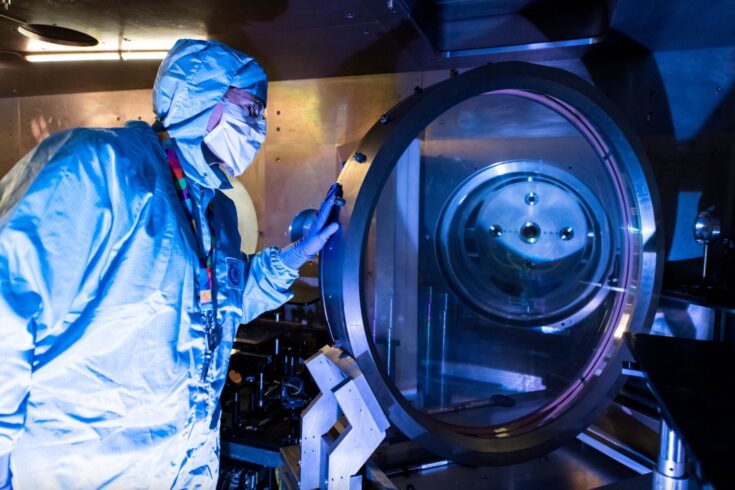The Science and Technology Facilities Council (STFC) Central Laser Facility (CLF) was awarded £85 million ($103.2 million) by UK Research and Innovation for an upgrade initiative that includes construction of the Vulcan 20-20 laser, which is set to be the most powerful laser in the world.

The CLF’s Vulcan laser will receive a significant upgrade that will bring the laser’s energy output to 20 PW. The upgrade will take place over the course of six years. Courtesy of the Science and Technology Facilities Council.
CLF, based at the STFC Rutherford Appleton Laboratory, uses a suite of lasers to generate plasma. The most powerful of the CLF’s lasers is Vulcan, with Vulcan 20-20 expected to be 100 times brighter than its predecessor.
The Vulcan 20-20 laser is so named because it will generate a main laser beam with an energy output of 20 PW alongside eight high-energy beams with an output of up to 20 KJ. This is a twentyfold increase in power, which is expected to make it the most powerful laser in the world.
Research conducted with the Vulcan 20-20 laser is expected to advance various scientific areas, from astrophysical phenomena like supernovae and solar flares to the potential of laser fusion as a clean energy source. Planned experiments include creating matter-antimatter pairs using strong electromagnetic fields, usually found only in space, and studying a new particle acceleration method for potential ion radiotherapy treatments to treat cancer.
UK Research and Innovation identified growing competition in field and the oversubscription of the Vulcan laser since its opening in 1997 as drivers behind the scientific need for a next-generation U.K. laser facility. The upgrade is expected to take six years to complete.